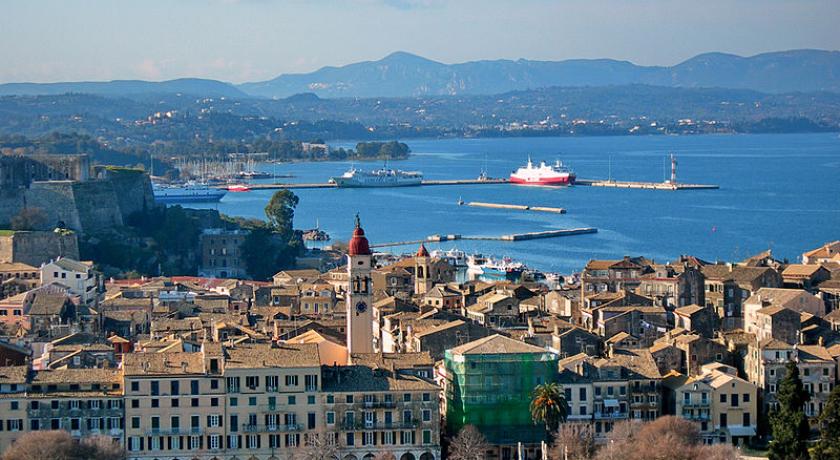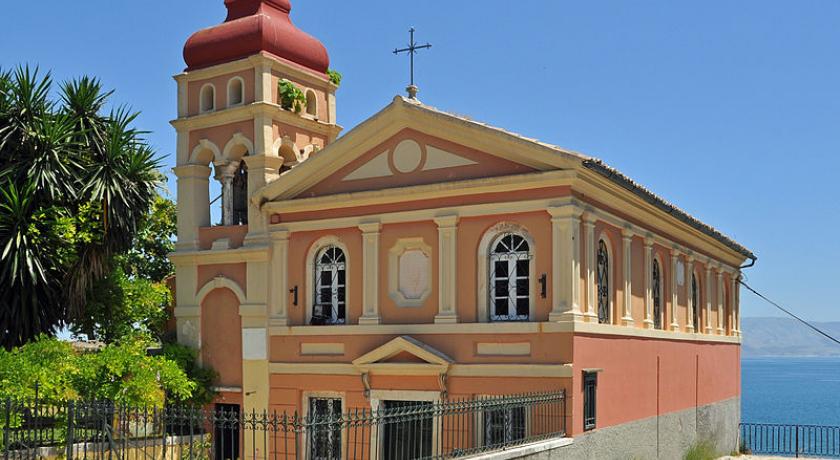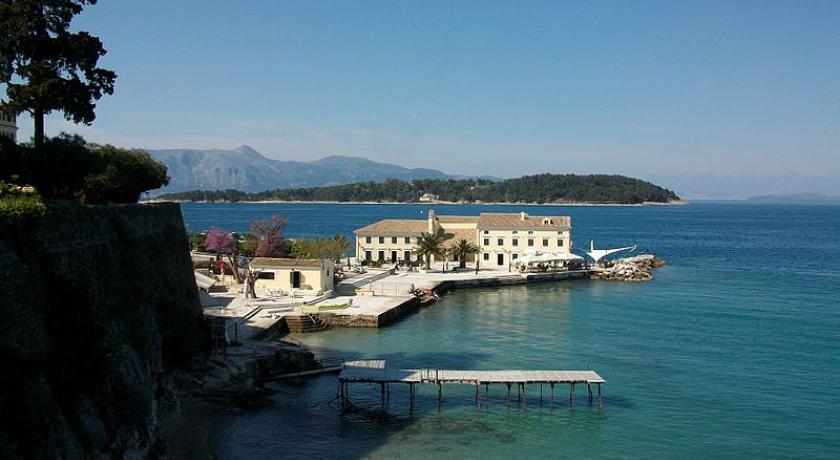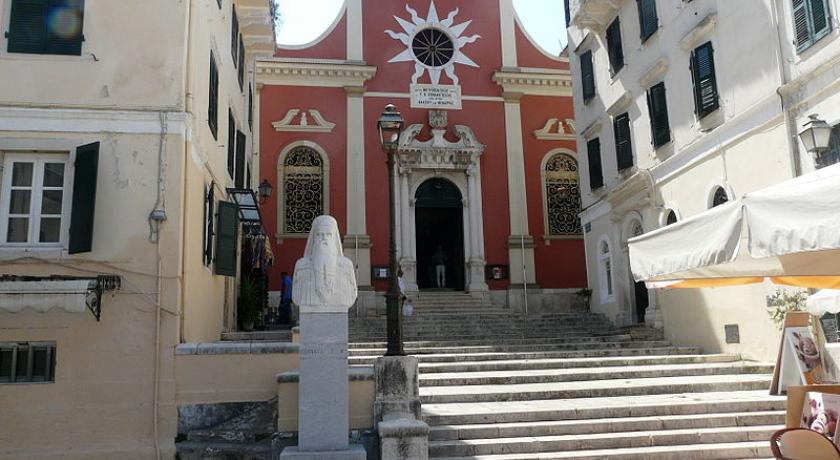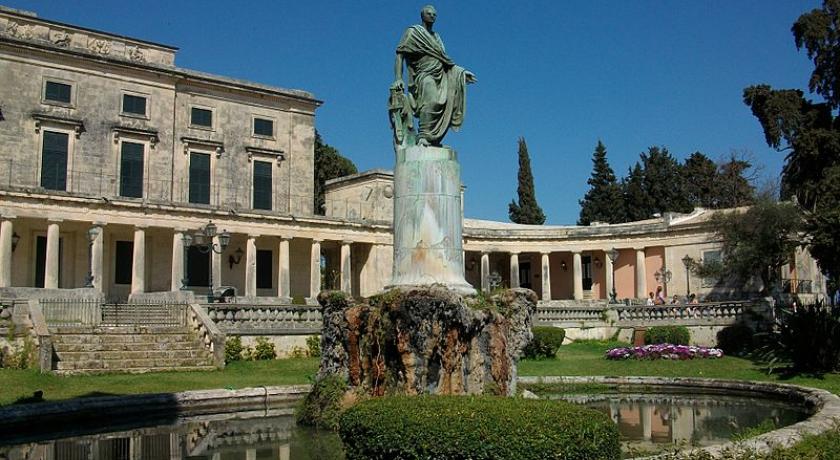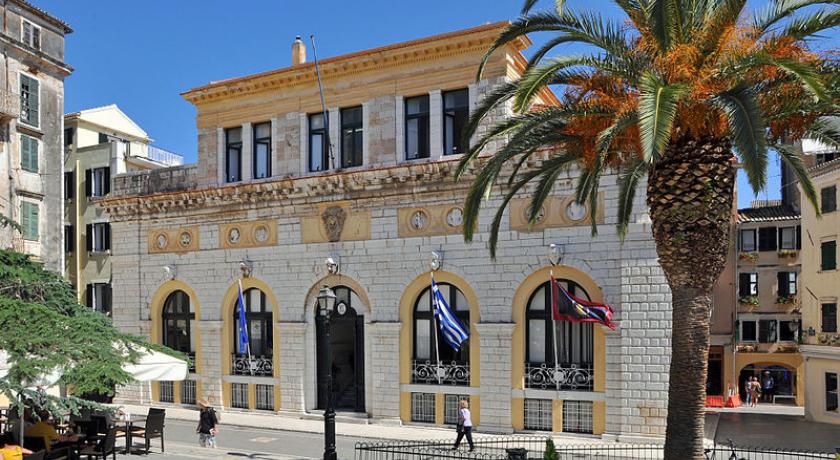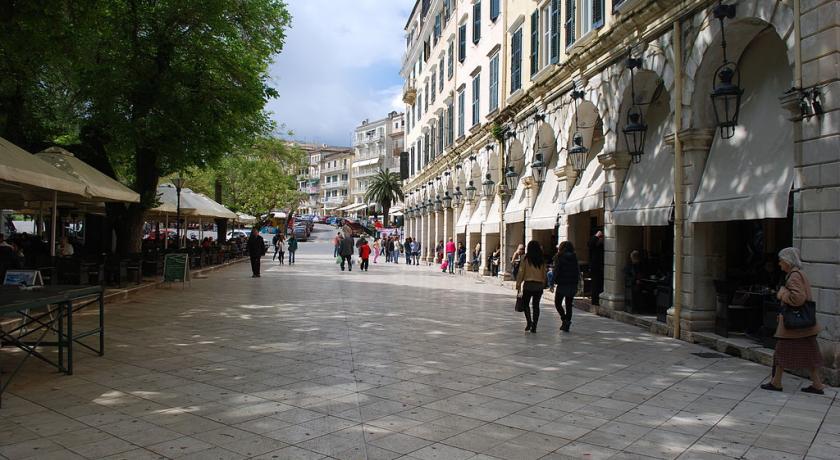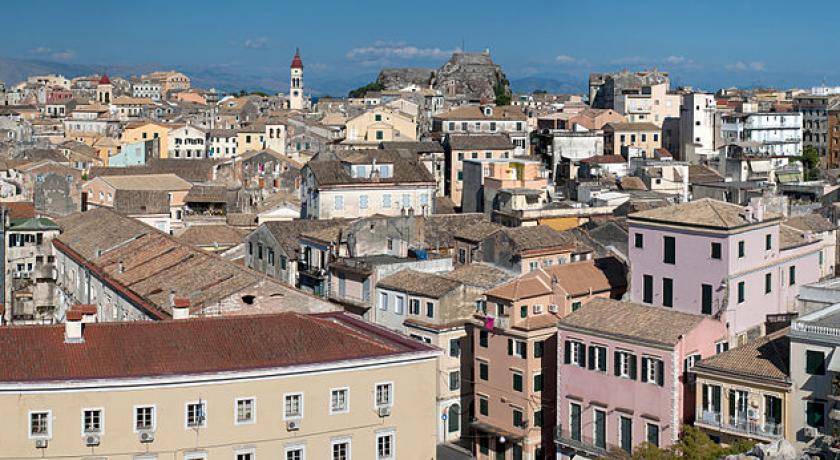Description
Corfu city or Kerkyra (Greek: ΚÎρκυρα) is a city and a former municipality on the island of Corfu, Ionian Islands, Greece. Since the 2011 local government reform, it is part of the municipality of Corfu island. It is the capital of the island and of the Corfu regional unit. The city also serves as a capital for the region of the Ionian Islands. The city (population 24,838 in 2011) is a major tourist attraction, and has played an important role since the 8th century. The city has become known since the Middle Ages as Kastropolis (Castle City) because of its two castles. In 2007, the old town of the city was inscribed on the UNESCO World Heritage List. The municipal unit of Corfu city has a land area of 41.905 km2 (16.180 sq mi) and a total population of 39,674 inhabitants. Besides the city of Corfu/Kérkyra, its largest other towns are Kanáli (population 4,086), Potamós (3,840), Kontokáli (1,660), Alepoú (3,149), and Gouviá (838).
Architecture
The old fortifications of the town, formerly so extensive as to require a force of from 10,000 to 20,000 troops to man them, were in great part thrown down by the English in the 19th century. In several parts of the town may be found houses of the Venetian time, with some traces of past splendour. The Palace of St. Michael and St. George, built in 1815 by Sir Thomas Maitland (1759–1824; Lord High Commissioner of the Ionian Islands) is a large structure of white Maltese stone. Near Gasturi stands the Pompeian style Achilleion, the palace built for the Empress Elizabeth of Austria, and purchased in 1907 by the German emperor, William II.
Of the thirty-seven Greek churches the most important are the cathedral, dedicated to Our Lady of the Cave; St. Spiridon's, with the tomb of the patron saint of the island; and the suburban church of St Jason and St Sosipater, reputedly the oldest in the island. The city is the seat of a Greek and a Roman Catholic archbishop; and it possesses a gymnasium, a theatre, an agricultural and industrial society, and a library and museum preserved in the buildings formerly devoted to the university, which was founded by Frederick North, 5th Earl of Guilford (1766–1827, himself the first chancellor in 1824) in 1823, but disestablished on the cessation of the English protectorate.
Based on the ICOMOS evaluation of the old town of Corfu, it was inscribed on the World Heritage List. The ICOMOS experts have noted that "about 70% of the pre-20th century buildings date from the British period" and that "whole blocks were destroyed" in the Old Town by the German World War II blitzes; these were "replaced by new constructions in the 1960s and 1970s". The urban fabric was classified as being predominantly of the Neoclassical period "without special architectural features for which it could be distinguished".
Layout
The town of Corfu stands on the broad part of a peninsula, whose termination in the Venetian citadel (Greek: ΠαλαιĎŚ ΦροĎŤριο) is cut off from it by an artificial fosse formed in a natural gully, with a salt-water ditch at the bottom, that serves also as a kind of marina known as Contra-Fossa. The old city having grown up within fortifications, where every metre of ground was precious, is a labyrinth of narrow streets paved with cobblestones, sometimes tortuous but mostly pleasant, colourful and sparkling clean. These streets are called "kantounia" (καντοĎŤνια) and the older ones sometimes follow the gentle irregularities of the ground while many of them are too narrow for vehicular traffic. There is promenade by the seashore towards the bay of Garitsa (ΓαρÎŻτσα), and also a handsome esplanade between the town and the citadel called Liston (ΛιστĎŚν) where upscale restaurants and European style bistros abound. The origin of the name Liston has several explanations: many former Venetian cities have a square of that name, coming from a Venetian word meaning evening promenade, but it can also refer to the closed-list aspect of an up-scale area reserved to the nobility registered in the Libro d'Oro.
The citadel was depicted on the reverse of the Greek 500 drachmas banknote of 1983-2001.
Culture
The city of Corfu has a long tradition in the fine arts. The Philharmonic Society of Corfu is part of that tradition. The Museum of the Philharmonic Society of Corfu presents in detail the musical heritage of the island.
Sports
Corfu is the only place in Greece where cricket is popular. It was imported into the island during British rule. The Hellenic Cricket Federation is based in Corfu and it is the only Greek sport federation that is based outside Athens. The most Greek cricket clubs are based in Corfu and they star in the Greek Championship. Notable cricket clubs of Corfu are Kerkyraikos Gymnastikos Syllogos (KGS), founded in 1893, GSK Vyron, founded in 1925 and AO Phaeax founded in 1976.
In other sports, Corfu has two teams with presence in higher divisions. The football club AOK Kerkyra, founded in 1969 originally as "AO Kerkyra", that plays in A Ethniki and the water polo club NO Kerkyra founded in 1935, with earlier presence in A1 Ethniki Polo.
Climate
Corfu city has a Mediterranean climate. The summers are hot, rainless but humid with temperatures reaching 33 °C (91 °F). The winters are mild and wet, temperatures around on or above 10 °C (50 °F).
Address
Corfu
Greece
Lat: 39.624984741 - Lng: 19.922346115


